Columbus who? Decolonizing the calendar in Latin America
Published in News & Features
This is the season of patriotism in Latin America as many countries commemorate their independence from colonial powers. From July to September, public plazas in countries from Mexico to Honduras and Chile fill with crowds dressed and painted in national colors, parades feature participants costumed as independence heroes, fireworks fill the skies, and schoolchildren reenact historical battles.
Beneath these nationalist displays ripples an uneasy tide: the colonial legacies that still tie the Americas to their Iberian conquerors. And as the calendar turns to October, another holiday highlights similar tensions – Columbus Day.
Since 1937, the U.S. has observed the holiday on the second Monday of the month, commemorating the explorer’s 1492 arrival in the New World. It remains a federal holiday, even as many states and cities rename it “Indigenous Peoples’ Day,” rejecting Christopher Columbus as a symbol of imperialism.
Most Latin Americans, meanwhile, know Oct. 12 as “Día de la Raza,” or Day of the Race, which also celebrates Columbus’ arrival in the New World and the tide of Iberian conquistadors that followed. But commemorating the event is all the more charged in these countries, home to the Spanish Empire’s most lucrative territorial assets and sweeping spiritual conquests. Days before taking office in September 2024, Mexican President Claudia Sheinbaum reiterated her predecessor’s demand that the king of Spain apologize for the genocide and exploitation of the conquest 500 years ago.
As a historian of Latin America, I’ve paid attention to the ways calendars signal a nation’s “official” values and how countries wrestle with these holidays’ meanings.
The first encounter between Aztec emperor Montezuma and conquistador Hernando Cortés took place on Nov. 8, 1519 – the latter backed by an entourage of 300 Spaniards, thousands of Indigenous allies and slaves, and hundreds of Africans, free or otherwise.
This moment of contact began Mexico’s 500-year transformation into a “mestizo” nation: a hybrid identity with largely European and Indigenous roots. During the colonial period, racial differences were codified into law, and those with “pure” Spanish bloodlines enjoyed legal privileges over the racially mixed categories that fell below them. The 19th century ushered in independence from Spain and liberal ideas that promoted racial equality – in principle – but in reality, European influence prevailed.
It was Spain that first proposed the Día de la Raza, held on Oct. 12, 1892, to commemorate the 400-year anniversary of Columbus’ arrival in the Americas – implying a celebration of Spain’s contributions to the mestizo racial mixture.
The celebration was part of a bid to fortify nationalism in Spain, as the waning colonial power continued its retreat from the hemisphere it controlled for the better part of four centuries. Spain also hoped to export the invented holiday to the Americas, strengthening trans-Atlantic cultural affinities tested by the United States’ growing sway. Across the Americas, Día de la Raza came to be synonymous with celebrating European influence.
In Mexico, the 1892 commemoration empowered members of the political elite who promoted European investments and culture as the model for modernizing the country. They used the occasion to extol the civilizing influence of the “madre patria,” or motherland, justifying the conquest and colonialism as a period of benevolent rule.
Only a few years later, however, the U.S. victory in the Spanish-American War swept the last vestiges of Spanish empire from the hemisphere. Spain’s exit made way for dual – and dueling – phenomena: rising patriotic spirit in Latin American countries, even amid increasing economic pressure and cultural influence from the U.S.
The 1910 Mexican Revolution ignited mestizo nationalism, which soon extended to other countries. In 1930s Nicaragua, Augusto Sandino started a revolution to oust the occupying U.S. Marines while calling for the unification of the “Indo-Hispanic Race.” Meanwhile, Peruvian intellectual José Mariátegui envisioned a modern nation built upon the ideals of a collective, reciprocal society, modeled by the Incan ayllu system. And in Mexico, beauty pageants celebrating native features gained popularity among the social classes accustomed to perusing department stores for Parisian imports.
Yet a tendency to emphasize Spanish cultural ancestry rather than Indigenous ones persisted. In the late 1930s, for example, October issues of Mexican children’s magazine Palomilla celebrated Columbus’ arrival as a heroic entry that provided the region with a common language and religion.
Meanwhile, the U.S viewed Pan-Hispanic sentiments as a threat: Spanish economic goals, cloaked in racial and cultural solidarity.
To help shore up hemispheric allegiances, Franklin D. Roosevelt proclaimed a new holiday on April 14, 1930: Pan American Day, or Día de las Américas. The holiday sought to offset the narratives of both Columbus Day and Día de la Raza and marked the U.S. administration’s Good Neighbor Policy pivot toward Latin America – a softer form of imperialism that promoted solidarity and brotherhood, at least on the surface.
The Pan American Union, an inter-American organization headquartered in Washington, saw the new date as an opportunity to forge common traditions across the hemisphere. It vigorously promoted Pan American Day celebrations, primarily among schoolchildren, exhorting teachers to implement games, puzzles, pageants and songs created in Pan American Union offices.
The holiday met enthusiastic reception in the United States. Midwesterners donned sombreros for parades, and Spanish language clubs in California hosted pageants celebrating the flags of American nations.
But Latin American commemoration was tepid at best. The Organization of American States, the successor to the Pan American Union, still recognizes Pan American Day. However, it never gained traction in Latin America and faded in the U.S. during World War II.
Latin America’s ambivalence toward holidays to commemorate the colonizers has taken a turn since 1992. The 500-year anniversary of Columbus’ arrival corresponded with yet another form of colonialism, in many Latin Americans’ eyes, as a new wave of multinational corporations colluded with heads of state to tap the continent’s oil, lithium, water and avocados.
Activists used the commemoration to call attention to lingering economic, social, racial and cultural inequities. In particular, the anniversary inspired Indigenous rights movements – some of which commemorated an “anti-quincentenary” to celebrate “500 years of resistance.”
The Día de la Raza has since been renamed to reflect anti-colonial sentiments, similar to Columbus Day in the United States. Ecuador calls Oct. 12 the Day of Interculturalism and Ethnic Identity; Argentina celebrates it as Day of Respect for Cultural Diversity; Nicaragua now refers to it as the Day of Indigenous, Black and Popular Resistance; in Colombia it is the Day of Ethnic and Cultural Diversity; and the Dominican Republic celebrates it as Intercultural Day.
In some places, renaming the holiday has drawn attention to Indigenous rights and culture. Bolivians, for example, draped a statue of a European monarch in a traditional “aguayo” garment, transforming her into an Indigenous woman. However, critics suggest that removing the holiday’s reference to the colonizers erases an important reminder of the conquest and its painful legacy.
As in the U.S., monuments to colonizers are coming down – including the monument to Columbus that occupied a conspicuous spot on La Reforma, one of Mexico City’s most-traversed thoroughfares.
In its place is a new installation: a purple silhouette of a girl with her fist raised, in honor of Latin America’s women activists. She heralds a new era of statues lining La Reforma, and heroes for the future – not mired in the colonial legacies of the past.
This article is republished from The Conversation, a nonprofit, independent news organization bringing you facts and trustworthy analysis to help you make sense of our complex world. It was written by: Elena Jackson Albarrán, Miami University
Read more:
Indigenous Peoples Day: Why it’s replacing Columbus Day in many places
For the Maya, solar eclipses were a sign of heavenly clashes − and their astronomers kept sophisticated records to predict them
How Latin America’s protest superheroes fight injustice and climate change – and sometimes crime, too
Elena Jackson Albarrán does not work for, consult, own shares in or receive funding from any company or organization that would benefit from this article, and has disclosed no relevant affiliations beyond their academic appointment.

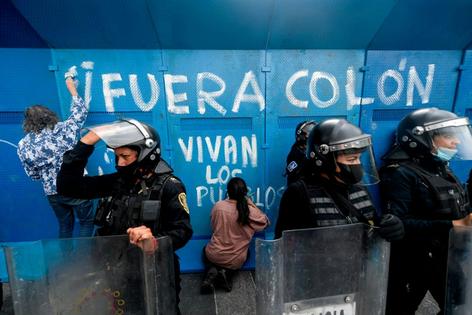
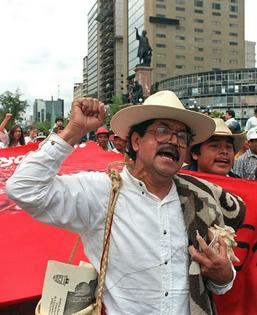
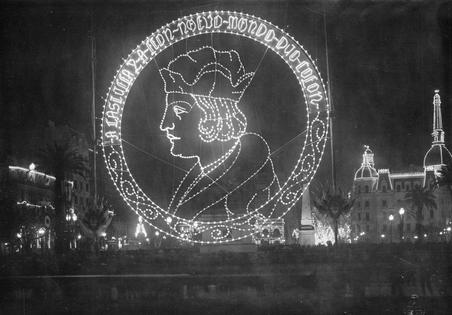
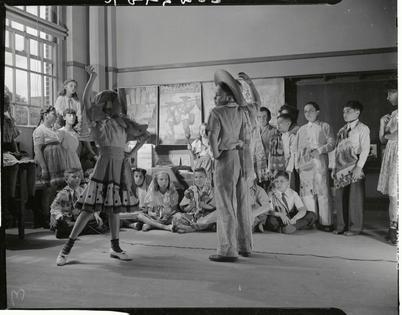
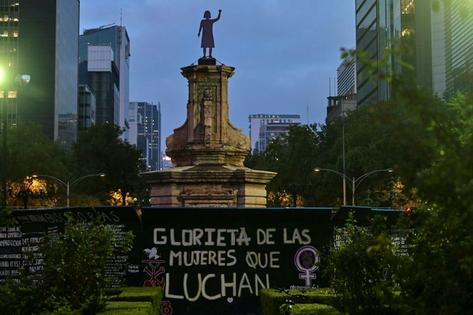











Comments